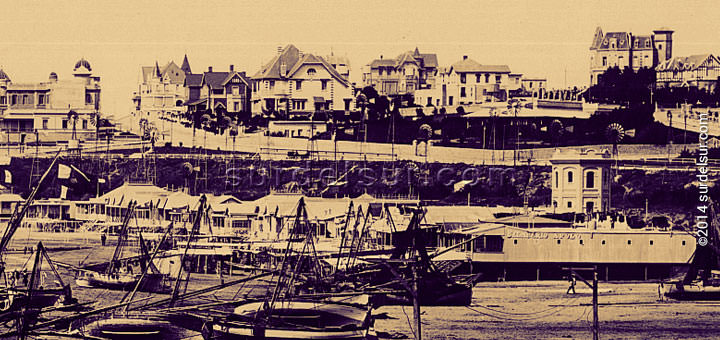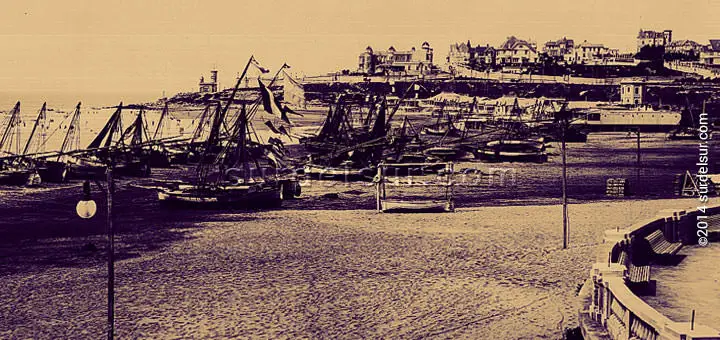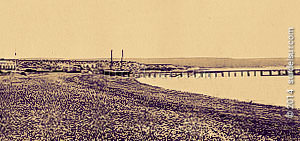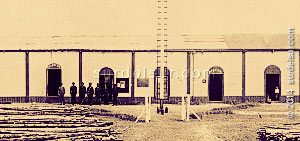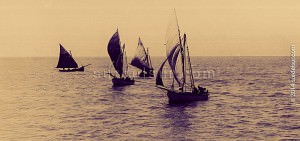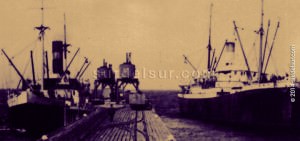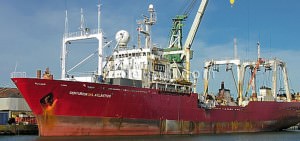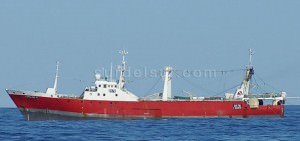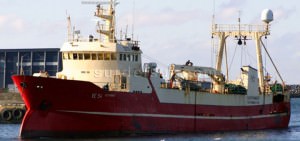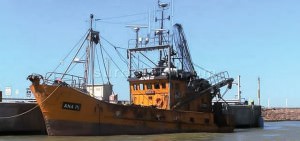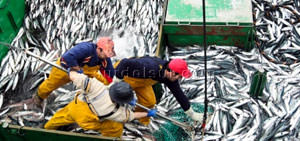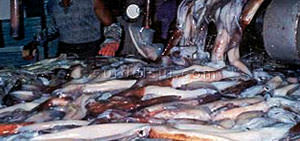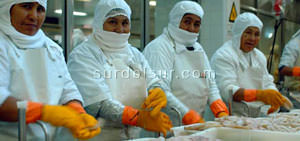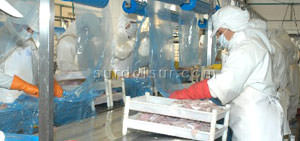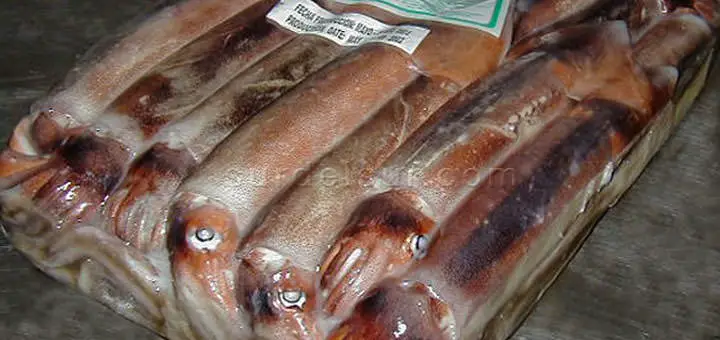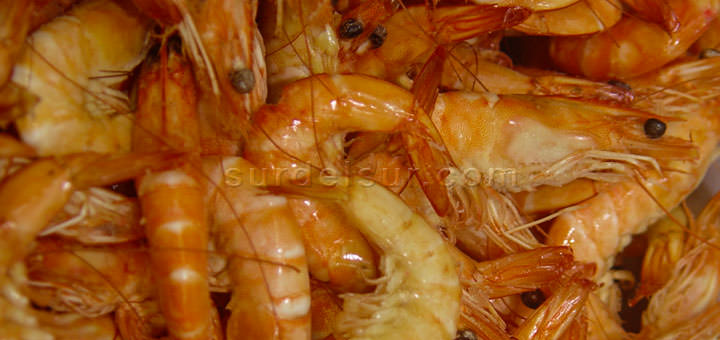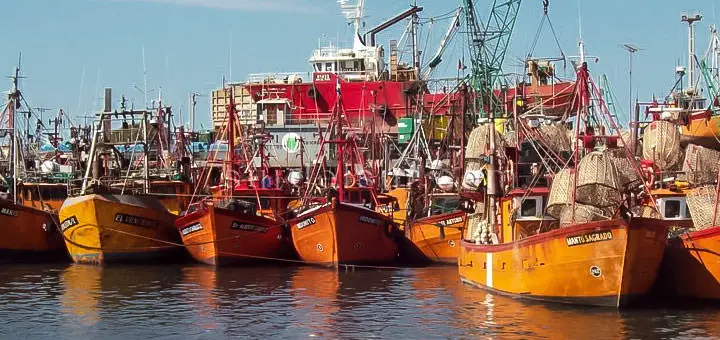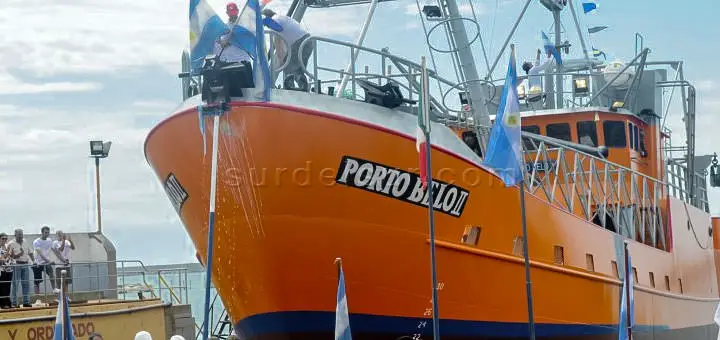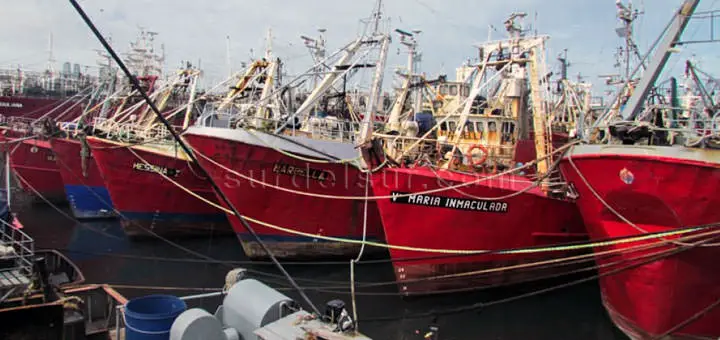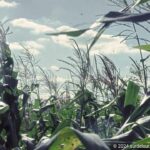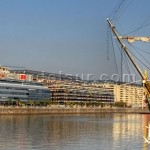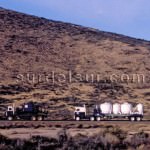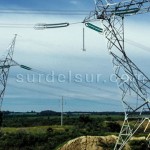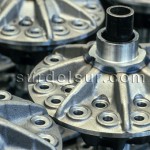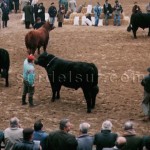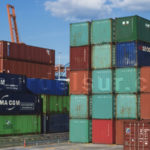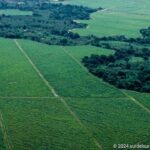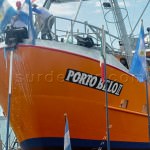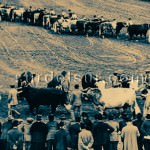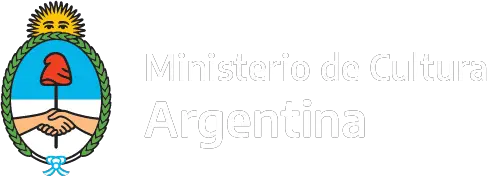Given the importance of fisheries resources, Argentina’s fishing is an economic activity with high expectations for the future. Argentina is a country with a long marine coast, with 4700 km of coastline on the South Atlantic Ocean, plus inland waters, and aquaculture.
The Argentine Sea is characterized by its size and biodiversity, making it one of the fishing banks, richest on Earth. Are about a thousand fish species, including fish, shellfish and mammals that live in its waters. The platform of the Argentine Sea covers 1,000,000 km2.
CONTENT
The Origin of the Fishing Activity in Argentina
If we go back in time, the first regulation of legislation on Argentine fishing activity dates back to the year 1821. By said regulation, fishing rights were established on the Patagonian coast for foreign vessels. It was repealed in 1880 by Law No. 1055. This law prohibited fishing on the Argentine coast without government permits.
Continuing with history, Law No. 3088 of 1894, regulated the activity in more detail. A short time later, in 1898 and 1899, the granting of fishing permits on Argentine coasts and waters under national jurisdiction was decreed.
Already in 1907, it was established that the products of hunting and sea fishing are of national production. In 1914, Law No. 9475 differentiated maritime and coastal fishing operations. It also regulates the techniques used for the capture, while fishing by foreign vessels is prohibited.
Commercial fishing activity evolved slowly despite the great potential of maritime fishing resources. At first, the activity was developed in the Province of Buenos Aires. In the coastal towns, fishing was carried out from the shore and in boats. Examples of this are General Lavalle, Bahía Blanca, Carmen de Patagones, San Antonio Este, Rawson, and Puerto Deseado.
Mar del Plata Port
Towards the end of the 19th century, the entry of Italian and Spanish immigrants gave new impetus to activity and innovation in fishing gear.
The combination of skilled labor, and the increased demand, was the initial impetus for the fishing activity. Mar del Plata, an Argentine coastal city, was at that time an emerging tourist destination with beaches on the Atlantic Ocean. Part of the Argentine society of the time had been enriched by agro-export activity. With a high purchasing power and sophisticated tastes, he chose the city of Mar del Plata as one of his favorite vacation spots.
The construction of the port of Mar del Plata in 1922, and the greater demand for fresh products from the sea, for restaurants and hotels, stimulated the establishment of fishing colonies. The majority were Italians, who also arrived with their fresh products, in the City of Buenos Aires.
At that time, there were about 140 steamships and 80 sailing ships. The catch was around 15 thousand tons.
In addition, canning industries based on the catches of anchovy, mackerel, and bonito were established. But it was only after World War II that the fishing industry underwent a fundamental change. Indeed, import substitution policies would be a turning point in the history of Argentine fishing activity.
Fishing activity (1960-1989)
However, it was an international situation, which drove the growth of the sector. During the 1970s, the depletion of fishing grounds in the northern fishing countries made it possible for Argentina to export white hake. It was also able to buy high-altitude fresh-water vessels and surpluses from fishing activity in the northern hemisphere.
This change in international fishing activity, and the presence of foreign freezer vessels, which sought catches away from their coasts, was decisive. Argentina then had to sanction Law No. 20136 in 1973. In this law, it is established that living resources in Argentine maritime zones are the property of the state. In turn, the state grants exclusive exploitation to Argentine vessels, with permission for fishing activity.
The highest catches recorded in this period, almost exclusively of hake, occurred in 1974 with a catch of 174 thousand tons.
In general terms, it could be estimated that between 1960 and 1989, the growth of the sector is historically associated with the incorporation of fishing units. Meanwhile, the drop in activity focuses on national and international crises, and on policy changes in the fishing countries.
Fishing Evolution (1990)
Continuing with the evolution of the sector, the catch capacity of the national fleet increased in the 1990s, due to the increase in the number of vessels and their fishing potential.
However, the uncontrolled increase in production brought another problem. The common hake, of which 585,491 tons were caught, in 1997, was declared in a state of emergency and severe restrictions were imposed on its capture.
In summary, it went from a situation of under-exploitation to one of excess catches. In this context, the fishing sector had to rethink its exploitation policies and apply responsible fishing regulations, in order to achieve a sustainable development of the Argentine fishing activity.
The intervention of the State regulatory authority, together with the fishing sector, was fundamental to determining the degree of sustainable exploitation. That is, to adapt the fishing effort: the pressure on the resource or fishing power by the vessels, to the available resources.
Federal Fishing Regime
In this way, a new regulatory framework arises. The Federal Fishing Law No. 24,922, was enacted in February 1998, and its spirit is expressed in its first article:
“The Argentine Nation will promote the exercise of maritime fishing in search of the maximum development compatible with the rational use of marine living resources. It will promote the effective protection of national interests related to fishing and will promote the sustainability of the fishing activity, fostering the long-term conservation of resources, favoring the development of environmentally appropriate industrial processes that promote obtaining the maximum added value and the greatest employment of Argentine labor”.
Federal Fishing Law No. 24,922 Article 1
Consequently, the enforcement authority of the Federal Fisheries Law arises, which is the Ministry of Agriculture, Livestock, Fisheries, and Food. It also introduces a regulation in the legal regime of fishing, by establishing the Administration Regime for Individual Transferable Capture Quotas (CITC)
For this reason, it is determined that the CITC is a temporary concession of the State, whose beneficiary is the holder of a fishing permit. This concession:
“enables the capture of a percentage of the Maximum Allowable Catch (CMP) of a given species and whose magnitude, expressed in tons, is established each year based on the CMP.”
Individual Transferable Catch Quotas (CITC)
Consejo Federal Pesquero
The Federal Fisheries Council was created by the Federal Fisheries Act No. 24.922. The organization, composed of representatives of the Nation and the province’s coastline, has among its main functions, setting the Argentina fisheries policy, planning national fisheries development, and channel research tasks. It has, in particular, the role of establishing yearly Total Allowable Catch by species, fishing permits approved, establishing the rights of removal and set fees for fishing activities, and regulating and set standards for the system of resource management bycatch quotas.
It is essential for the CFP to involve fishing actors (fishing authorities, research organizations, chambers of industry), in discussing the main aspects inherent to the process of the quota system. For this discussion is taken into account, to prioritize the most commercially valuable target species and in which the main activity of the fishing fleet is concentrated: Polish, black hake, hoki, and hake.
The Fishing Industry
Fishing activity in Argentina is one of the economic activities involving the exploitation of renewable natural resources. These resources properly managed, can be preserved for future generations.
In 2013 the total marine catch totaled 821,000 tons, estimated that 63.2% were fish, mollusks, and 24.1% to 12.7% for crustaceans, which marks an increase in catches in the historical percentage of crustaceans.
By 2018, the total catches are somewhat lower, but the ratio of the volume of catches per species varies substantially. The percentage of the capture of crustaceans has clearly increased
Period 2018: (according to the Ministry of Agribusiness)
- Total Catches: The volume of total marine catches is 777,855 tons.
- Fish: Corresponding 415,090 tonnes to fish, with the protagonism of the hake hubbsi
- Crustaceans: Headed by shrimp, crustaceans, totaled 250,768 tons.
- Mollusks: On the other hand, the mollusks whose star is the squid illex, reached 111,967 tonnes.
The challenge of the fishing industry is to guide their efforts towards high value-added per unit of weight in fish and the pursuit of market opportunities for those species whose catches can still have a significant increase.
Argentine Fishing Ports
The port has the largest number of landings and processing plants nationwide is the port of Mar del Plata, Province of Buenos Aires. Next in importance Puerto Madryn (Chubut Province); Puerto Deseado and Punta Quilla (Puerto Santa Cruz) (Provincia de Santa Cruz); Ushuaia (Tierra del Fuego Province, Antarctica, and South Atlantic Islands), Comodoro Rivadavia (Chubut Province); Necochea- Quequén, and Bahia Blanca (Buenos Aires); San Julian (Santa Cruz Province); San Antonio Oeste (Province of Rio Black); and Caleta Paula (Santa Cruz Province).
The Buenos Aires port is characterized by the activity of fresh fish vessels and the processing of catches in processing plants. While in the Patagonian fishing ports freezer vessels and surimi predominate.
Sea Fishing
Sea Fishing in the Northern or Buenos Aires Sector
This sector has about 88,900 sq. mi. (230,000 km2), almost a fourth of the Argentine Sea, where half the total fish output in the country is caught. The main ports are Mar del Plata, Necochea, Quequén, Ingeniero White, Bahía Blanca, and Río Salado. The most important port is Mar del Plata, as it has an infrastructure that allows for all the production stages to be carried out. The Mar del Plata fleets catch 80 percent of the total Buenos Aires output.
The main species is hake, which represents 60% of the catch. Other species such as anchovy, pollack, whiting, and gatuzo are also caught. Among the crustaceans, the most popular are the shrimp and squid among mollusks.
The Southern or Patagonian Sector
The main ports are: Ushuaia, Madryn, Deseado, Comodoro Rivadavia and San Antonio Oeste. In this area they catch hake, king crab, squid, and mussels. In Peninsula de Valdés kelp is usually collected.
Continental Fishing
River and lake fishing
Only reaches 2% of the total production due, among other things, pollution of the waters. In Parana, Plate and Uruguay are caught: tarpon, mackerel, surubí, gold, and patí. In the Patagonian lakes the planting of stands out salmon and trout. In lakes and lagoons, commercial fishing is irrelevant to economic activity. There, sport fishing stands out.
Aquaculture
The practice of aquaculture for commercial use began in 1990. The total production in 2006 reached 2,500 tonnes, comprising 14 species. It extends from the Colorado River to Tierra del Fuego.
The current production of the country concerned with the cultivation of freshwater fish, freshwater crustaceans, marine bivalve molluscs: oysters and mussels; besides amphibians and aquatic reptiles.
The fish that are grown are: trout, pacu, surubí, tilapia, common carp, bighead carp, silver carp and amur.
The production of crustaceans is limited to “freshwater lobster red claw”; while amphibians are now represented by the cultivation of the bullfrog, and finally, aquatic reptiles as being of two native species of alligator.
Trout farming is done with water from glaciers, from Jujuy to the south of the island of Tierra del Fuego, with a production of over 1,300 tons. for 2006.
There are also numerous productions on the ground using tanks and raceways, developed by small and medium producers generally related to tourist routes. In the north are located in the provinces of Salta, Jujuy and Córdoba; and in the south, in the towns of Bariloche and El Bolsón, in the province of Rio Negro, and in the province of Tierra del Fuego, Antarctica and South Atlantic Islands.
References:
All graphic material in this report is edited digitally. The customized version by surdelsur.com shown on this page is performed based on the following documents:
- {a- … – f} Surdelsur.com version on [Original old black and white photographs] Recovered November 2014, from Fundación Histamar
- {a- … – d} [Color photographs of fishing vessels] Retrieved November, 2014, from: Fundación Histamar
- Miguel A. Galdeano (2007) [Color photograph of the fishing vessel] Retrieved November 2014, from Congelador Carolina P
- Official Portal of Argentina: [Fishing activity color image] Recovered from Enlace, Noviembre, 2014.
- {a- … – e} [Color images of processing plants and vessels] Retrieved November 2014, from Fundación Nuestro Mar
- {a-b}[Color images] Retrieved November 2014, from Industrias Pesqueras
- [Color image of moored ships] Retrieved November 2014, from Pescare
- [Fishing vessel color photography] Recovered November 2014, from Fundación Histamar
- Ministry of Agroindustry: [Color image of marine fish farming] Retrieved November 2014, from Fisheries and Aquaculture Documento Web
Bibliography:
- Escuela de Ciencias Políticas de la UCA: Programa de Investigación Geográfico Político Patagónico. El Sector Pesquero Argentino. Informe General. Noviembre, 1999. República Argentina.
- Ministerio de Relaciones Exteriores, Comercio Internacional y Culto: Informe Sectorial Industria Pesquera Argentina.
- Ministerio de Agricultura, Ganadería y Pesca: Pesca y Acuicultura. República Argentina.
- Ministerio de Agricultura, Ganadería y Pesca: Pesca y acuicultura. República Argentina. Normativa, Código de Buenas Prácticas para la Acuicultura y documentos de interés.

